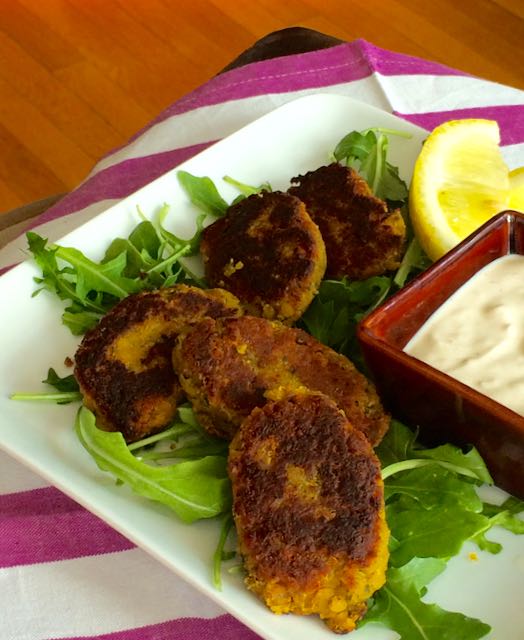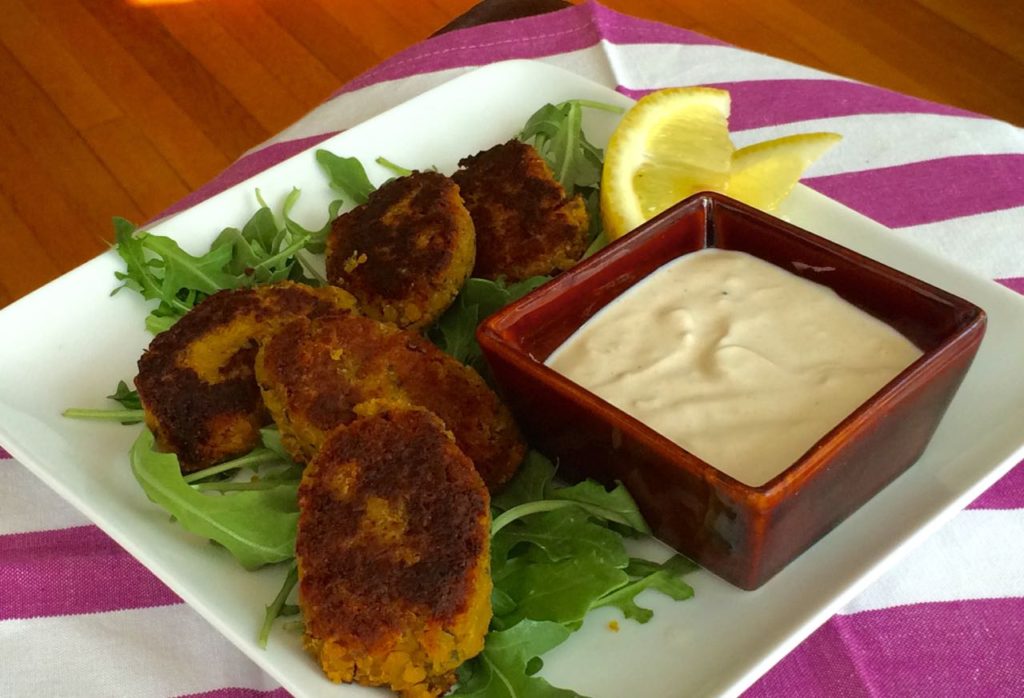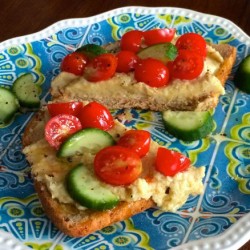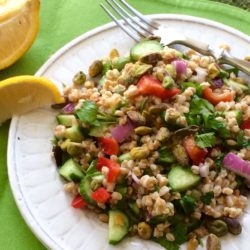Monday, July 4, 2016
Whether dipped into tahini all on its own, stuffed into pita for a traditional Greek sandwich, or served on a bun like an American-style burger, falafel is a recipe you need in your repertoire.
 Like many delicious dishes, falafel recipes are a dime a dozen. The choices of add-ins and spices are almost daunting for this cook who, oddly, had never before made falafel.
Like many delicious dishes, falafel recipes are a dime a dozen. The choices of add-ins and spices are almost daunting for this cook who, oddly, had never before made falafel.
It’s strange, really: how is it possible this mostly-vegetarian girl with a global palate has never made falafel?
I don’t really have an answer, other than to say I think I was turned off by the consumption of mediocre falafel around the world. Like lobster rolls and hummus, I’ve had a lot that really suck—including in Istanbul, of all places, which was quite disappointing indeed. My most recent falafel in NYC was far too dry, lacked oomph, and, oddly, did not come with tahini, its traditional sesame dressing. (Whaaa?!)
Homemade falafel.
It’s time.
Falafel
Ingredients
Instructions. Heat oil and sauté the onion and red pepper over medium heat until soft but not browned, about 5 minutes. In a food processor, whir half of the chick peas until chopped but not completely puréed and move to a bowl. Then pulse remaining chick peas with spices, herbs, and lemon juice together with herbs, flour, baking soda, and egg until incorporated; the herbs will become finely chopped and inflect the entire mixture with flavor and color. If you prefer a chunky mixture where you still retain some unique flavors, dump mixure into a bowl and gently mix in the sautéed vegetables and chopped fresh herbs, then the baking powder and enough flour to hold the mixture together. Chill mixture at least 30 minutes, or until ready to cook.
Heat oil in a frying pan at medium-high, until shimmering. Shape falafel into football-shaped croquettes or patties—whatever you wish—and cook until nicely browned, about 4 minutes each side (if patties) or about 6 minutes total (if smaller). Remove to a paper towel to absorb any excess oil and sprinkle with flaky salt until ready to serve.
Cooking Notes. Falafel is a highly spiced mixture, and skimping on the herbs and spices will make for less-than-stellar falafel; with time and experience, you can futz with the blend to suit your palate. If you begin with dried beans and soak them overnight they do not require further cooking; some recipes suggest this method provides superior texture to the softer canned chick peas. I used my high-quality, no-salt added canned beans this time and it was lovely. Finally, falafel mix freezes beautifully, and today’s post came from a mix that had been in the freezer a year (!). Don’t believe ridiculous hype about how long you can freeze things: assuming your freezer is at a safe temperature (less than 40 degrees F), things can live there for quite some time with no degradation of flavor; your taste buds will tell you if it sat too long.
I was ecstatic about how this falafel turned out! They fried up in the pan beautifully, a nice thin crisp crust. No fryer required, either, which can create a greasy ball that masks the herbaceous deliciousness of the dish. My method yielded a most and incredibly flavorful interior. So good!

Serve with tahini—of course!—atop a bed of arugula with a lemon wedge and you need nothing more than your fingers to enjoy this wonderful dish.
Or—coming soon—stuff them into pitas for a traditional falafel sandwich or fry into a patty for a falafel burger, a fun take on the American classic.
I’m so happy I finally have a go-to recipe for falafel, and thanks to Facebook fan Karen L. for asking me for the recipe, which I’ve had sitting around for a year now, just waiting to be posted. This recipe is dedicated to her.
—
Learn more about food personality and health expert Dr. PK Newby here, or her experience as a nutrition scientist, professor, and consultant here. Or click here if you just want to ogle food porn featuring plant-based, globally inspired cooking.




